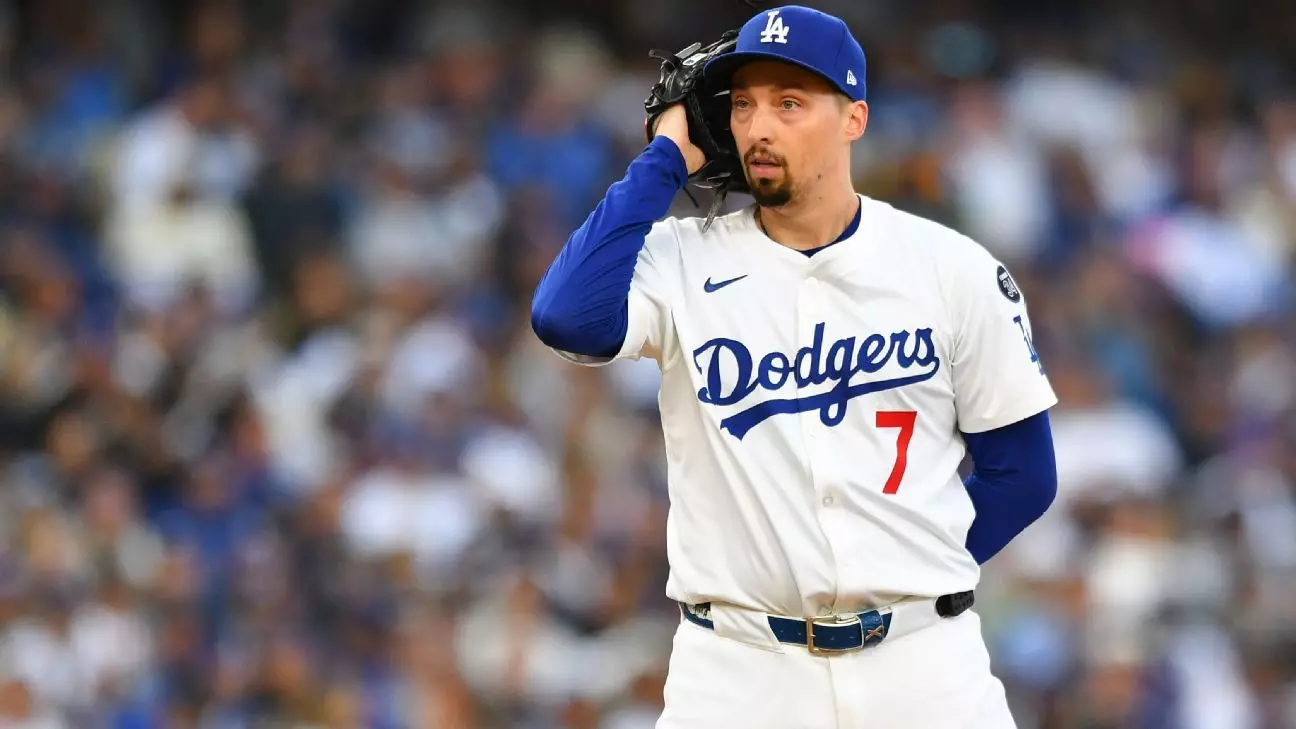Resilient Recovery: Dodgers Navigate Pitching Challenges with Optimism
There is something uniquely compelling about the way sports teams navigate challenges, and the Los Angeles Dodgers are a prime example of this resilience. I have always been inspired by their ability to turn obstacles into opportunities. This season has been no different, as they find themselves facing a series of pitching challenges. Yet, there’s a palpable sense of optimism that permeates their strategy, one that could serve as a lesson for us all in managing setbacks with grace.
Watching the Dodgers this year has reminded me of the importance of patience and strategic planning—not just in baseball, but in life. The resilience they display on the field is a testament to their strong team spirit and unwavering commitment to success, no matter the circumstances. Their approach to dealing with injuries, especially those affecting key players like Blake Snell, is both thoughtful and inspiring. It’s fascinating to see how they balance immediate performance needs with long-term health considerations for their players.
Key Takeaways
- The Dodgers prioritize player health over immediate returns, ensuring long-term success.
- Injuries are viewed not as setbacks but as opportunities for growth and resilience.
- The team’s depth and strategic management help them navigate challenging periods effectively.
The Impact of Injuries on Team Dynamics
The Dodgers’ current situation is a classic case of how injuries can affect team dynamics. With star pitcher Blake Snell sidelined due to persistent shoulder inflammation, the team faces significant challenges. Snell’s role is crucial; he isn’t just any player but a cornerstone investment for the Dodgers. His limited appearances have heightened concerns among fans and management alike. Despite this, the Dodgers are taking a cautious approach, focusing on Snell’s long-term health rather than rushing his return.
Manager Dave Roberts has emphasized the importance of careful management of Snell’s recovery process. This decision reflects a broader shift in how teams manage player health in professional sports. By prioritizing long-term stability over short-term gains, the Dodgers are setting an example that other teams might do well to follow. It’s about ensuring that players like Snell can contribute meaningfully throughout their careers without being hampered by recurring injuries.

The Ripple Effect Across the Team
Blake Snell isn’t the only pitcher grappling with health issues; the injury bug has affected several key players, testing the team’s depth and resilience. Veteran pitcher Clayton Kershaw is also on the road to recovery after a successful minor league outing. His progress is encouraging and offers hope during these challenging times. Roberts expressed optimism about Kershaw’s rehab performance, highlighting his impressive velocity and stamina—signs that he’s on track for a strong comeback.
Meanwhile, Tyler Glasnow’s return from leg cramps shows that not all news is grim. His recovery is a reminder of how unpredictable player health can be over a grueling season. Dodgers fans are also eager to see Shohei Ohtani back in action after his elbow surgery and brief personal hiatus. The uncertainty surrounding Ohtani’s situation underscores the complexities that come with managing multiple high-profile injuries at once.
Navigating Through Challenges with Optimism
In light of these challenges, what does this mean for the Dodgers moving forward? While injuries might seem debilitating at first glance, they actually present an opportunity to showcase resilience and depth within the team. The ability to navigate through such hurdles illustrates a philosophical shift for the franchise—one that embraces adversity as part of its journey toward excellence.
This approach sets a powerful precedent for how player health should be managed in competitive sports environments. By focusing on long-term outcomes rather than quick fixes, the Dodgers are not only safeguarding their players’ futures but also paving the way for sustained success amid uncertainty. It’s an approach that could redefine how teams across leagues address similar issues.
Final Thoughts
As we watch this season unfold, it’s clear that every setback offers potential for growth and adaptation—not just for individual players but for entire teams as well. The way in which franchises like the Dodgers respond to these challenges could define more than just a single season; it could set new standards within professional sports altogether.
Their emphasis on resilience amidst adversity serves as both inspiration and guidance—a reminder that sometimes true strength lies not in avoiding difficulties altogether but in facing them head-on with optimism intact.
Dodgers pitching
Blake Snell injury
resilience in sports
player health management


Leave a Reply